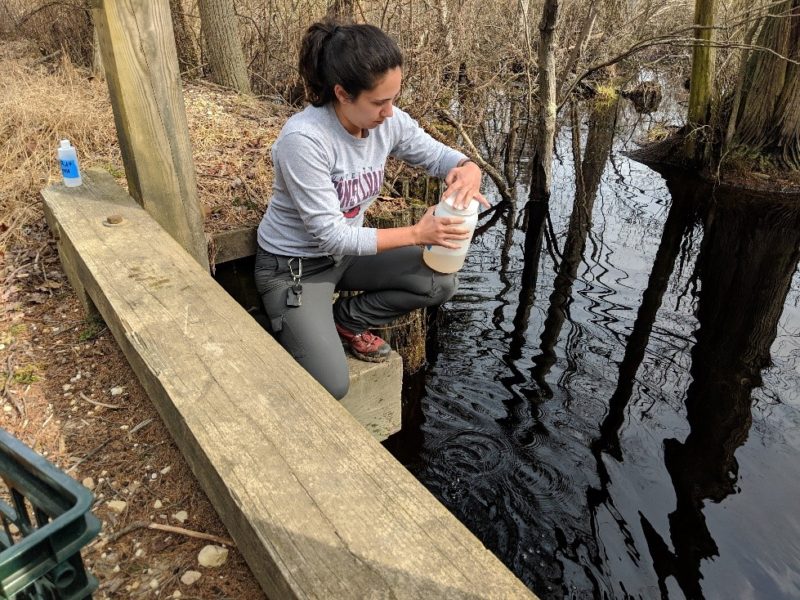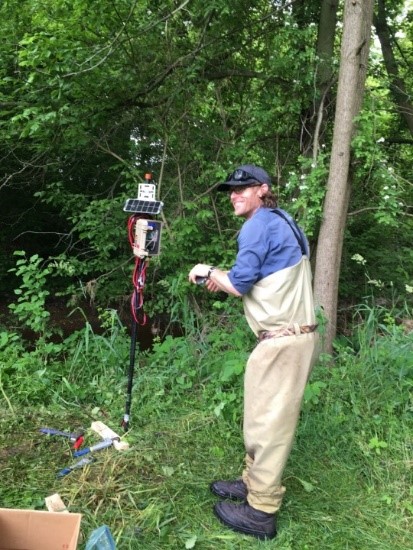For the past 6 years, nonprofits have worked together across New Jersey, Pennsylvania, New York, and Delaware as part of the Delaware River Watershed Initiative (DRWI). The DRWI is a collaborative network of organizations working to protect and restore forests, farms, and urban green spaces for the benefit of water quality. In South Jersey, nine nonprofits are working together to protect the Kirkwood-Cohansey Aquifer, a groundwater system of 17 trillion gallons of water that serves as a source of drinking water for about 1 million people in South Jersey.

In order to understand how healthy our waterways are and to track changes in water quality, the American Littoral Society, Pinelands Preservation Alliance, and South Jersey Land and Water Trust collect samples of water 4 times per year from local streams that are connected to the Kirkwood-Cohansey Aquifer. This sampling effort began in 2018 and includes measuring temperature, dissolved oxygen, and conductivity. Collected samples are sent to the Academy of Natural Sciences for advanced laboratory analysis to measure nitrogen and phosphorus. Together, these measurements tell us about the health of our waterways, help us understand changes that may be taking place, and identify locations that could benefit from restoration.
High levels of nitrogen and phosphorus in particular can lead to a condition called eutrophication, where excessive amounts of nutrients in water can cause algal blooms. Algal blooms can be harmful to human health and can deprive aquatic wildlife of the oxygen they need to survive.
South Jersey organizations are working closely with Partnership for the Delaware Estuary, Rutgers University Water Resources Program, Stroud Water Research Center, and the Academy of Natural Sciences on this endeavor. To date, they have collected 130 samples. Analyzing those samples will help the partners understand the chemistry behind water quality trends in these streams.

In addition to collecting water samples, the group has installed four data sensors to take continuous water quality measurements, including temperature and turbidity. Turbidity is an indicator of how many particles are in the water, like sediment that may carry pollutants and block light needed for plants to grow. Sensors have been installed in the Salem, Cohansey, and Maurice River Watersheds, and real time data can be viewed here: http://monitormywatershed.org/browse/.
A few ways you can keep streams clean and healthy:
- Reduce fertilizer use on your yard. Fertilizers contain nutrients like nitrogen that, when applied in excess, can wash into nearby streams.
- Sign up for a homeowner workshop for expert advice (and financial assistance, in select areas) to install a rain garden in your yard.
- Plant native plants, which require less water and reduce demand on the aquifer.
- If you own farmland, consider installing agricultural practices that help keep soil from washing away into streams.
For more information on water quality parameters and what you can do to help, visit: https://s3.amazonaws.com/delawareestuary/AquiferBrochureFINAL.pdf
Content for this post was provided by Kaitlin Tucker from the Partnership for the Delaware Estuary
